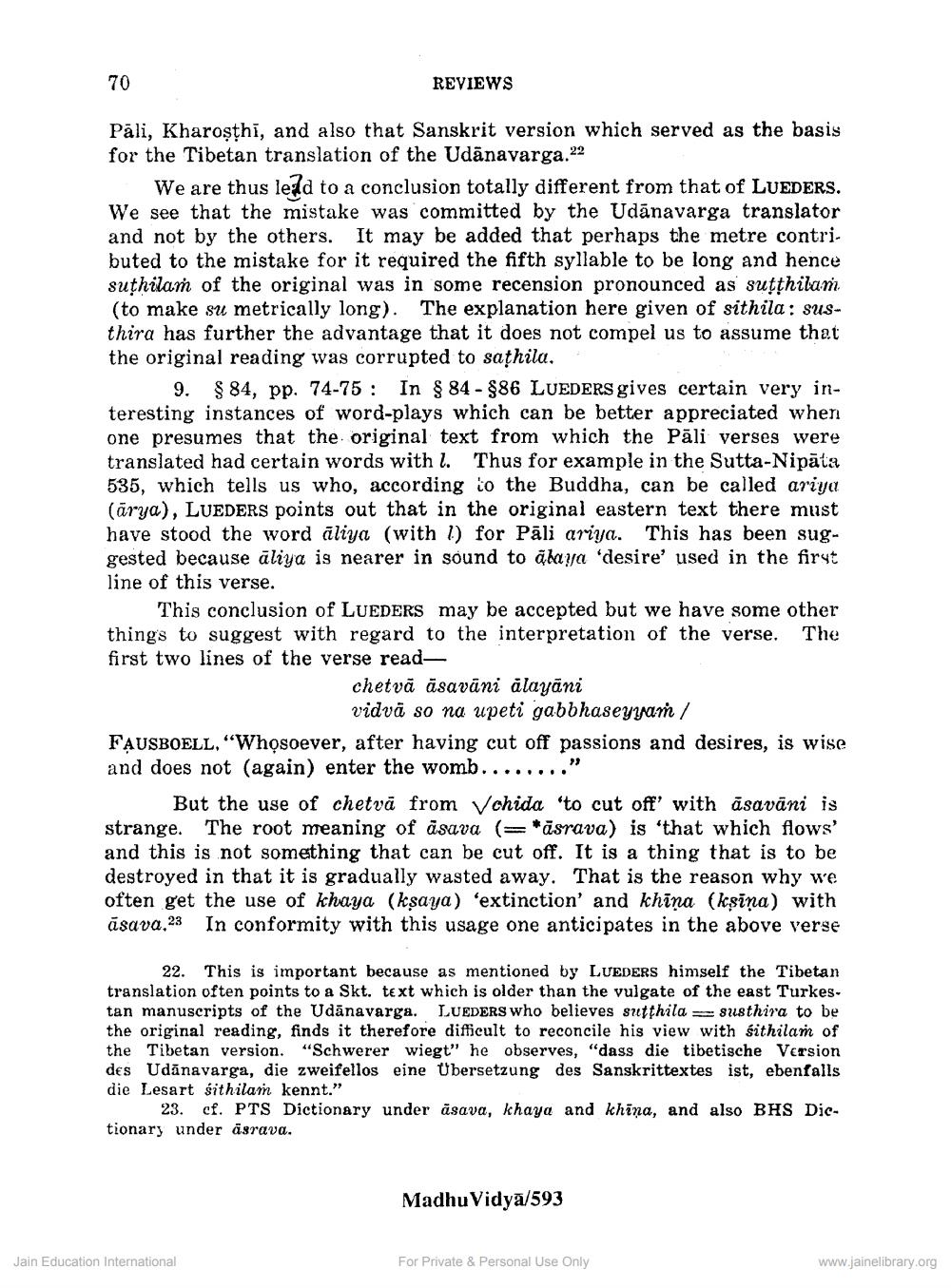________________
70
REVIEWS
Pāli, Kharoṣṭhi, and also that Sanskrit version which served as the basis for the Tibetan translation of the Udanavarga."
We are thus lead to a conclusion totally different from that of LUEDERS. We see that the mistake was committed by the Udanavarga translator and not by the others. It may be added that perhaps the metre contributed to the mistake for it required the fifth syllable to be long and hence suthilam of the original was in some recension pronounced as sutthilam (to make su metrically long). The explanation here given of sithila: susthira has further the advantage that it does not compel us to assume that the original reading was corrupted to sathila.
9. 84, pp. 74-75 In § 84-§86 LUEDERS gives certain very interesting instances of word-plays which can be better appreciated when one presumes that the original text from which the Pali verses were translated had certain words with . Thus for example in the Sutta-Nipäta 535, which tells us who, according to the Buddha, can be called ariya (ārya), LUEDERS points out that in the original eastern text there must have stood the word aliya (with ) for Päli ariya. This has been suggested because aliya is nearer in sound to abaya 'desire' used in the first line of this verse.
This conclusion of LUEDERS may be accepted but we have some other things to suggest with regard to the interpretation of the verse. The first two lines of the verse read
chetva äsavāni ālayāni
vidva so na upeti gabbhaseyyam/
FAUSBOELL. "Whosoever, after having cut off passions and desires, is wise and does not (again) enter the womb...
But the use of chetva from Vehida 'to cut off' with āsavāni is strange. The root meaning of asava (=*äsrava) is 'that which flows' and this is not something that can be cut off. It is a thing that is to be destroyed in that it is gradually wasted away. That is the reason why we often get the use of khaya (kṣaya) 'extinction' and khina (kṣina) with asava. In conformity with this usage one anticipates in the above verse
Jain Education International
??
22. This is important because as mentioned by LUEDERS himself the Tibetan translation often points to a Skt. text which is older than the vulgate of the east Turkestan manuscripts of the Udanavarga. LUEDERS who believes sutthila susthira to be the original reading, finds it therefore difficult to reconcile his view with sithilam of the Tibetan version. "Schwerer wiegt" he observes, "dass die tibetische Version des Udanavarga, die zweifellos eine Übersetzung des Sanskrittextes ist, ebenfalls die Lesart sithilam kennt."
23. cf. PTS Dictionary under asava, khaya and khina, and also BHS Dictionary under äsrava.
Madhu Vidya/593
For Private & Personal Use Only
www.jainelibrary.org




